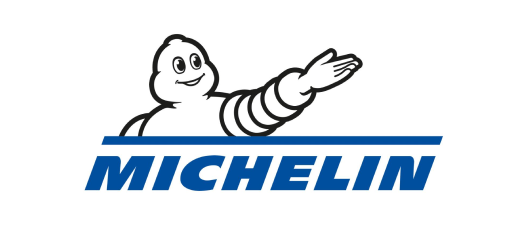"Confluent serves as a central nervous system connecting core ACERTUS systems, including our transportation management, title and registration, and car haul systems."
Jeffrey Jennings
VP of Data Integration Services, ACERTUS
ACERTUS has transformed itself into a leading one-stop shop for fleet vehicle transportation, differentiating themselves with key services across their three main business units (Car Haul, Drive Away, and Title & Registration).
ACERTUS manages the movement of vehicles between locations, the storage of vehicles in 66 hub and prep locations across the United States and Canada, title processing capabilities in all 50 states, Puerto Rico, and Canada, and reconditioning services to ensure vehicles are passed to new customers in pristine condition.
With business units using different systems, ACERTUS needed a streaming platform to integrate information across the disparate lines of business and provide real-time data for both customers and internal teams. Enter Confluent.
The Challenge
Need for data integration across three business units
Through acquisitions over the years, ACERTUS assembled its comprehensive array of vehicle lifecycle solutions. However, the data systems of those companies had not been well integrated. As a result, teams relied heavily on manual processes involving email, phone calls, spreadsheets, and even Zendesk tickets to move data between systems when new orders were created or updated. The manual workflows were labor-intensive and prone to errors and delays as order information was manually typed or copied from system to system.
Before Confluent, for example, automotive logistics required several disjointed steps: an agent arranged vehicle transport from the source and then handed the vehicle to car services and vehicle storage; a third division arranged compliance services along with title and registration. Finally, the vehicle was delivered to the client.
Cumbersome handoffs led to pricing delays, supply chain bottlenecks, duplicate records, and customers left waiting. ACERTUS’ automotive logistics divisions needed to work together to provide efficient service for their clients.
Lack of real-time, self-service data
Real-time data is critical in creating a cohesive unit. Historically, handoffs of the data were slow, often involving multiple people to provide the required access. Furthermore, only one area could work on a contract at a given time, which might take days. Meanwhile, vehicles and customers were kept waiting for results.
ACERTUS needed a modern architecture to coordinate its upstream and downstream systems. Because each of their three business units had been operating as its own monolith, ACERTUS needed to break down each of those monoliths into microservices. They looked for a way to easily access and share customer, vehicle, and transit data to the different lines of businesses across the company.
Why Confluent
Upon hearing about Confluent from a vendor, Jeffrey Jennings, the VP of data integration services, started looking into whether Confluent might be the answer to ACERTUS’ challenges. “What made Confluent stand out from the competition was support and the forward-thinking nature of the company backed up by execution.”
ACERTUS has a relatively small technology team of 50+ people, which doesn’t leave much room for self-managed Apache Kafka®. In addition to the need for data governance, Jennings says, “Confluent Cloud was the only choice.”
ACERTUS loved that they could connect their data using Confluent’s pre-built source and sink connectors, and once disparate systems were instantly connected in minutes. Because market rates are used for delivery, an API integration allows agents and customers to react in real-time, getting the best rate instantly based on real-time data. Finally, Confluent has allowed ACERTUS to develop an event-driven microservice architecture paving the way for future growth and scaling the business.
The Solution
Streaming data pipelines to connect systems across their businesses
With Confluent, ACERTUS uses real-time data streaming to integrate systems across all their businesses. For example, when ACERTUS integrated with CarGurus, they needed to receive and process orders in real-time. Using Confluent connectors and Schema Registry, they have an out-of-the-box means of tracking all data coming in or going out. Any downstream consumer can readily access the data and process it without having to write or modify code. Additionally, any changes made have version tracking and transparency to ensure high-quality data throughout the business.
Event-driven microservices
Confluent enabled ACERTUS to shift from a monolithic to event-driven microservices architecture. They also used Stream Lineage to visualize the flow of their data, helping the team clearly understand how events are being responded to, produced, and consumed by different microservices.
Downstream and upstream impacts of changes are assessed, and historical timelines of orders are tracked.
Before Confluent, data scientists, for example, had to go into each system and compile weekly or monthly reports. Now that the systems talk to each other and the data is centralized—that process is down to minutes! Take their VINs de-duplication use case, for example. Occasionally when different customers put in an order for a vehicle, the same VIN may show up on their paperwork.
Under the old system, an investigation would be launched that would take days. With Confluent, an event is produced at the time of a customer order, is immediately checked, and in the case of a duplicate VIN, a notification is instantly sent out. Confluent enables these real-time notifications to accelerate the resolution process, while eliminating all duplicates.
“With Confluent Cloud, we’re able to accelerate microservice development—deliver new features and capabilities faster, such as real-time push notifications and real-time digital experiences for tracking car status, to improve customer engagement,” says Jennings.
Streaming data pipelines for a real-time data warehouse
“One of the major pain points in building a data warehouse is getting access to the data. Typically the work is the negotiation, the talking, the convincing of people to get access to it,” explains Jennings. “Now we can stream all the data from other systems, process it immediately, and sink to our Snowflake data warehouse. It’s all there, we don’t have to ask anyone for it.”
ACERTUS’ business units have different operational databases. One uses PostgreSQL and MySQL, and the other two use SQL Server—building point-to-point pipelines from relational database management systems (RDBMS) to their data warehouse resulted in high latency and data fidelity issues.
Confluent helps ACERTUS build streaming data pipelines using SQL Server and PostgreSQL CDC source connectors, and the Snowflake sink connector, along with ksqlDB for processing data in flight. There is also integration with NetSuite and Salesforce so that there’s a seamless transition from quote to cash. No more asking for data; it’s all up to date in a centralized location that anyone across the business can access.
Confluent enables ACERTUS to build out data models and provide analytics to its customers. Internally, data pipelines give ACERTUS agents autonomy to make decisions by pairing real-time capabilities with an internal artificial intelligence (AI) model seamlessly integrated with Confluent.
Stream governance for streaming data pipelines
For real-time communications with external customers, such as CarGuru, ACERTUS utilizes Schema Registry to facilitate editing and additions to order contracts without requiring changes to the underlying code. With over 5,000 schemas, searching for the right data for a specific team or use case can be cumbersome, but Stream Catalog allows individuals and teams to search and tag topics based on their relevance. Changes to schemas and topic data are noted in real time so once data users find the data they’re looking for, they can trust that it’s accurate and reliable.
ACERTUS maximizes the benefits of Confluent’s integration with AWS Marketplace, specifically using Amazon Elastic Container Services to run Kafka Streams apps as Docker containers on AWS Fargate. ACERTUS also uses Verizon’s wavelength and 5G networks to improve response time for a mobile app that sends real-time location-based notifications to customers.
Business Impact
Generating millions in new revenue, with increased profit margin and greater cost savings
“The solution we built with Confluent enabled us to lower costs, increase automation, eliminate errors, and open new business opportunities that are already generating more than $10 million in revenue in the first year,” says Jennings.
ACERTUS also realized cost savings at each step in the process. “In total, there’s potentially millions in money that we’ve saved,” says Jennings. In one division, the ability of Confluent to notify the agent of a rate reduces information asymmetry—delivering internal cost and time savings, savings for the customer, and an increased profit margin.
Payable optimization for their customers
“By utilizing Confluent for real-time data streaming, we were able to speed up the notification of events happening in real-time so that we can respond to it immediately, as opposed to running a daily, monthly, or weekly report,” says Jennings.
When one process is complete, the system publishes a topic to Kafka, allowing all systems to communicate and reply. Because there are no delays, ACERTUS has become more efficient at producing value for its customers. A prime example of this is instantly generating a more competitive market rate for carrier delivery.
Freed up FTEs from running Kafka or building connectors
Using a cloud-native, fully managed Kafka service eliminates the need for FTEs to run and maintain the Kafka infrastructure. Using Confluent’s pre-built connectors saves significant time and effort as well. Letting Confluent handle automation for configuration, deployment, testing, and monitoring frees the FTEs to focus on more strategic tasks, such as data analysis and scalability.
Greater team autonomy and agility
Empowering teams to access, process, and share data independently reduces delays and enables teams to take ownership of their data requirements. Self-service data access promotes autonomy and allows teams to make data-informed decisions without delays, which leads to increased efficiency and productivity.
Looking Forward
Since implementing Confluent, ACERTUS has eliminated bottlenecks and provided real-time data to the relevant parties. Automatic system updates have improved customer service and seamless handoffs between their three business units. Data gathered from multiple systems can be compiled into reports with a single click. An in-house AI model can transmit information, enabling agents to track a vehicle’s journey.
As ACERTUS continues to integrate new systems and build new models, Confluent opens up possibilities for expanding data and systems that converse end-to-end in real-time.
Included in this expansion is data mesh. “The data mesh framework is important. Confluent is helping us actually turn data into a product. We use streaming data to build analytical data models then package that as a product for our customers,” says Jennings. ACERTUS plans to build enterprise-wide data catalogs of various business data sets powered by Schema Registry and Stream Governance. This is expected to bridge data communication between teams, develop services, and provide a common communications channel.
“The goal is to have our systems have an interactive conversation with one another constantly,” says Jennings. With Confluent’s infrastructure and tools, the sky’s the limit.
Jennings says, “That’s the real benefit of Confluent that we just didn’t have before—real-time access to an information superhighway.”
Lancez-vous sur Confluent dès aujourd'hui
Pour toute inscription, recevez 400 $ à dépenser sous 30 jours.



